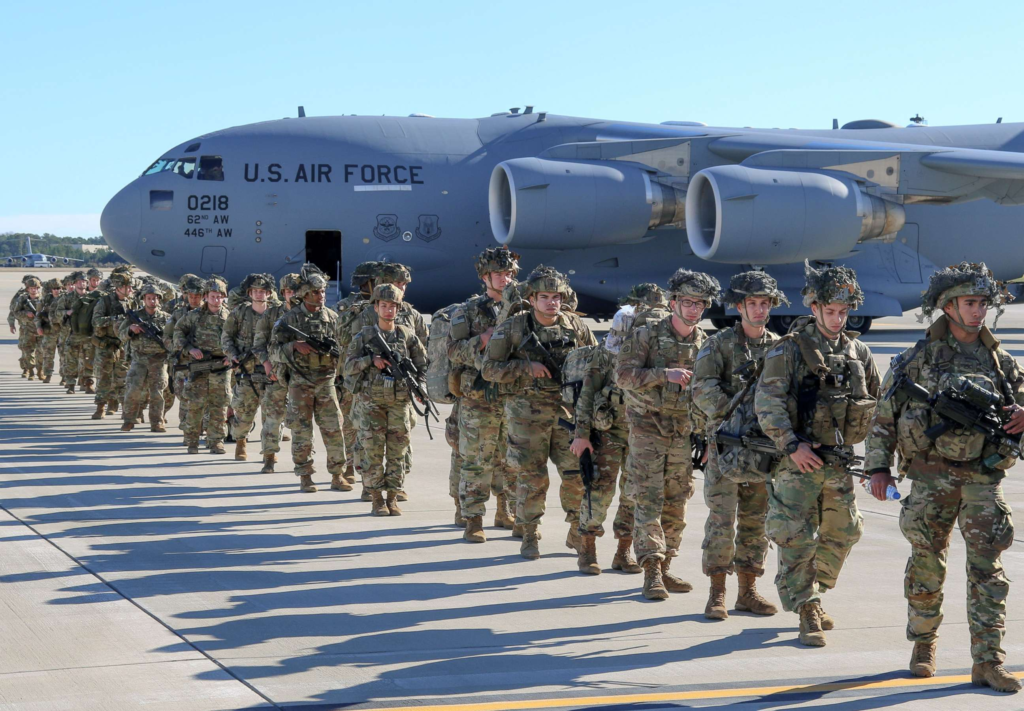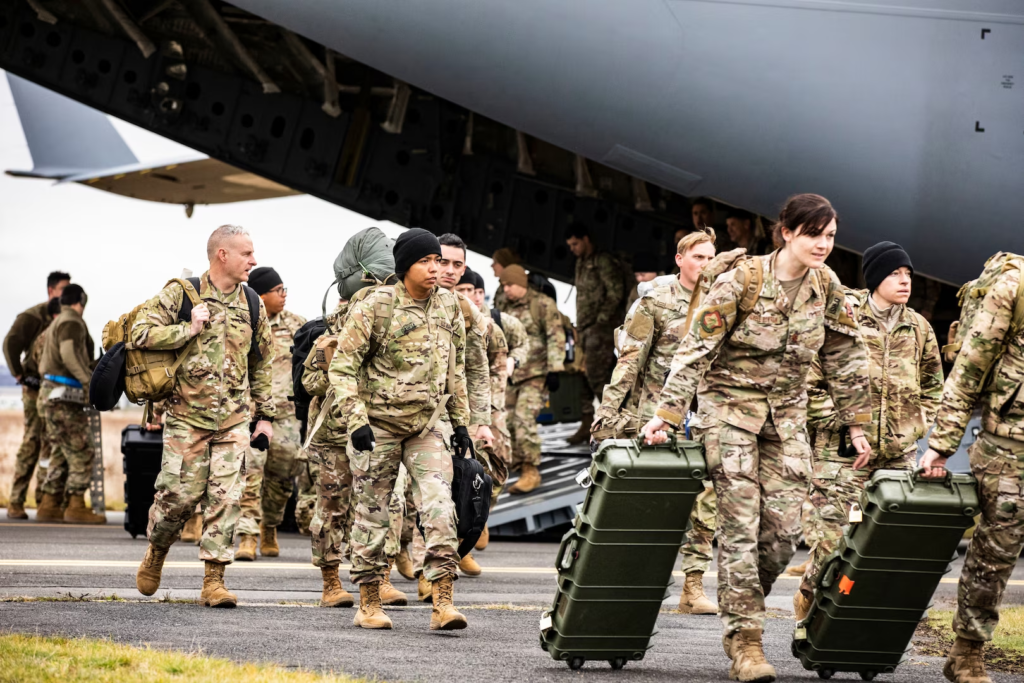US sends more troops to Middle East as tensions escalate between Israel and Hezbollah, marking a critical juncture in the region’s ongoing conflict.
The Pentagon’s decision to deploy additional forces comes amid a sharp rise in violence, particularly following the deadliest Israeli airstrike in Lebanon in nearly two decades. This airstrike has not only resulted in a tragic loss of life but also heightened fears of a broader regional war.
The situation in Lebanon has become increasingly dire, with Israeli airstrikes targeting Hezbollah positions, claiming hundreds of lives and causing significant injuries. The U.S. response underscores its commitment to stability in the region and its support for Israel as it navigates this complex security landscape.
Rising Violence and US sends more troops to Middle East
In recent days, the Israeli military has intensified its operations in southern Lebanon, where it has conducted numerous airstrikes against Hezbollah targets. Israeli Prime Minister Benjamin Netanyahu’s government has issued warnings to Lebanese civilians, urging them to evacuate areas near Hezbollah strongholds. This escalation has prompted a swift response from the U.S. military.
Read : I Will Vote for Kamala Harris in Upcoming US Election: Taylor Swift
The Pentagon confirmed that additional US sends more troops to Middle East in light of these developments. The current U.S. military presence in the region includes around 40,000 troops, and this new deployment reflects an effort to bolster forces amid rising tensions.
Read : Russia Formally Declares the US as an “Enemy” State
Maj. Gen. Pat Ryder, the Pentagon press secretary, stated that the U.S. is sending “a small number of additional military personnel forward” to augment the existing forces already in place. While the specifics of this deployment remain classified, it is clear that the U.S. is prepared for various contingencies as the situation evolves.

The USS Harry S. Truman aircraft carrier has also been deployed, accompanied by two Navy destroyers and a cruiser, as part of a regularly scheduled mission. The presence of multiple carrier strike groups in the region has become increasingly common in response to the heightened risk of conflict.
This strategic move not only demonstrates U.S. military readiness but also serves as a deterrent against further aggression from Hezbollah and other Iranian-backed groups.
Implications for Regional Stability
As the US sends more troops to Middle East, the broader implications for regional stability cannot be overlooked. The increasing violence between Israel and Hezbollah poses a significant threat to not only Lebanon but also neighboring countries in the region.
The ongoing conflict has already resulted in a humanitarian crisis, with civilians caught in the crossfire and fleeing their homes in search of safety.
Reports indicate that the recent Israeli airstrikes have led to a significant number of casualties, with hundreds of Lebanese civilians killed or injured. The Health Ministry in Lebanon has confirmed the devastating impact of these attacks, further complicating an already precarious situation.
The U.S. State Department has responded by advising American citizens to leave Lebanon, citing the unpredictable nature of the ongoing conflict and the potential for further escalation.

In light of these developments, the U.S. is also actively engaged in diplomatic efforts to restore calm along the Israel-Lebanon border. Senior officials have indicated that they are working on “concrete ideas” to present to allies and partners during the upcoming U.N. General Assembly.
The goal of these diplomatic initiatives is to provide an “off-ramp” for both Israel and Hezbollah, allowing for a reduction in tensions and a path toward de-escalation.
The Humanitarian Crisis Unfolds
The humanitarian crisis resulting from the ongoing conflict cannot be overstated. As the Israeli military continues its airstrikes, civilians in Lebanon face dire conditions, with thousands displaced and seeking refuge from the violence.
The situation is particularly grave in southern Lebanon, where many residents have been forced to evacuate their homes amid intense bombardment.
Pictures shared on social media depict the harrowing reality for many families who have fled their homes, carrying what little they can salvage as they seek safety.
The roads leading north from southern Lebanon are congested with traffic as people try to escape the conflict. Schools and public spaces are being transformed into makeshift shelters for the displaced, further straining already limited resources.

In this context, the U.S. military’s presence in the region takes on added significance. The potential for American forces to assist in humanitarian efforts is being closely monitored, as the situation continues to deteriorate. The possibility of evacuating American citizens from Lebanon also remains a critical consideration for U.S. officials.
As US sends more troops to Middle East, the urgent need for peace and stability in the region has never been more apparent. The escalating violence between Israel and Hezbollah poses a significant threat not only to the immediate area but also to global security.
The international community must come together to address the underlying issues driving this conflict and work toward a peaceful resolution.
While the U.S. military presence serves as a deterrent, it is essential that diplomatic efforts are prioritized to de-escalate tensions and prevent further loss of life. The humanitarian crisis unfolding in Lebanon calls for a collective response, emphasizing the importance of protecting civilians and ensuring their safety amid ongoing hostilities.
The situation in the Middle East remains precarious, with the potential for further escalation if decisive action is not taken. The U.S. plays a crucial role in shaping the response to this crisis, and it is imperative that all stakeholders work collaboratively to achieve a lasting peace.
let’s enjoy few years on earth with peace and happiness….✍🏼🙏

